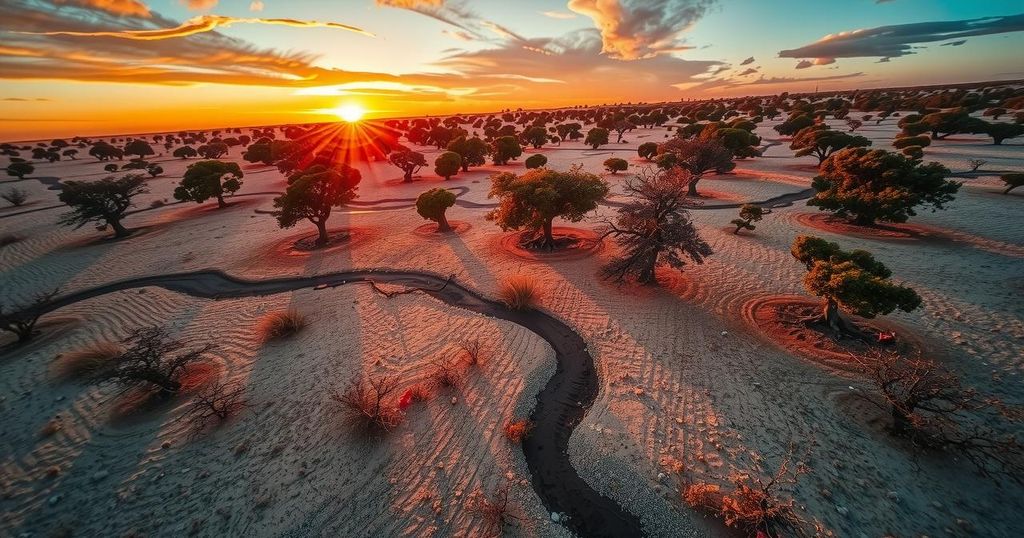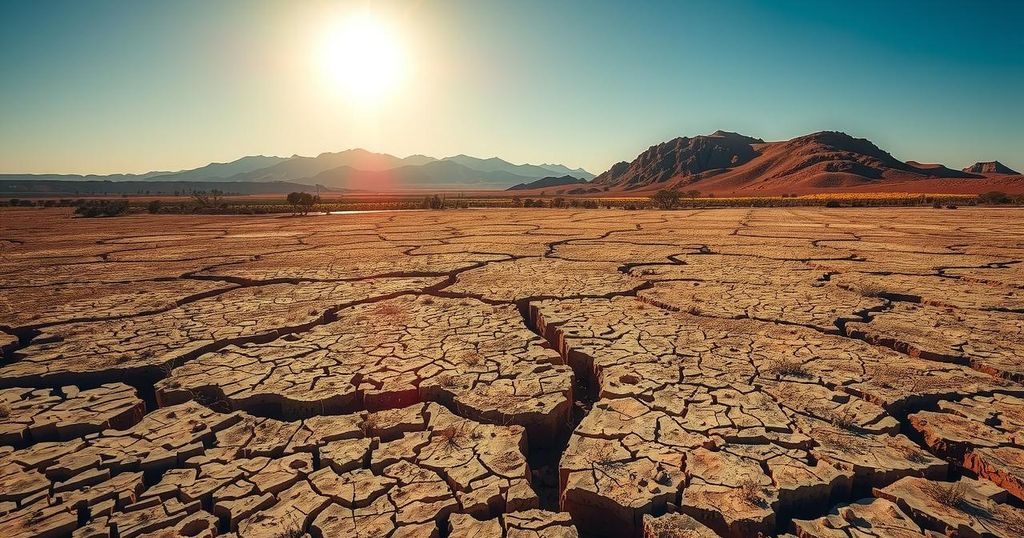Rethinking Carbon Storage: The Importance of Small Trees in Namibia’s Dry Woodlands
This article discusses the vital role of Namibia’s dry woodlands in carbon sequestration, highlighting the significance of small trees and shrubs in storing carbon. It emphasizes the need for improved assessment strategies that include all vegetation sizes, to better represent the full carbon storage potential of these ecosystems and enhance climate policies and conservation efforts.
Carbon sequestration in vegetation, particularly in Namibia’s dry woodlands, is an essential process where plants capture and store atmospheric carbon dioxide (CO2) through photosynthesis, converting it into organic material. This process is vital as the global community seeks solutions to mitigate climate change. While large trees are typically recognized for their long-term carbon storage capacity, the significant role of smaller trees and shrubs in carbon absorption and cycling must not be overlooked.
The importance of Namibia’s dry woodlands lies in their unique ecosystem structure, with small trees and shrubs making up nearly one-third of the total woody biomass in northern and north-eastern regions. Traditional assessments focusing solely on large trees fail to accurately represent these ecosystems’ overall carbon storage potential. This exclusion could miscalculate global carbon budgets, ultimately affecting conservation strategies and carbon credit initiatives.
Research conducted in areas like Kavango, Zambezi, and Otjozondjupa has highlighted that small trees and shrubs contribute significantly to biomass in dry woodlands, especially when the overstorey allows more sunlight to reach them. Conversely, dense canopies hinder their growth. Understanding these dynamics sheds light on the critical role woodland structure plays in maximizing carbon storage, particularly in drier geographic regions.
Current global assessments often disregard smaller trees (less than 5 cm to 10 cm in diameter), based on wet forest studies, leading to undervaluation of dry woodland carbon storage, diminished funding from carbon credits, and ineffective conservation policies. Adjusting how carbon in these ecosystems is measured will enhance management efficiency and ensure the correct valuation of these regions.
The implications of this study are substantial for global climate policies and environmental agreements. Recognizing the carbon potential of small trees is crucial for Namibia, as it impacts carbon markets, conservation funding, and international climate obligations. Specific recommendations include amending carbon assessments to include smaller vegetation, appreciating the total carbon storage capabilities of dry woodlands, and formulating policies that acknowledge the entire woodland structure to enhance ecosystem protection.
In light of the pressing challenges posed by climate change, it is vital to acknowledge and leverage Namibia’s dry woodlands as significant carbon repositories. This necessitates a paradigm shift in how these ecosystems are monitored and valued, particularly for scientists and policymakers. By incorporating all plant sizes in carbon assessments, Namibia could enhance its conservation methods, increase access to global funding, and tackle climate change more effectively, ultimately ensuring a sustainable future for subsequent generations.
Led by Hermane Diesse, a doctoral student from the Namibia University of Science and Technology, this study was part of a collaborative effort involving teams from Namibia, the Democratic Republic of Congo, and the United Kingdom.
Namibia’s dry woodlands possess significant, yet often overlooked, carbon sequestration potential. Current practices largely underestimate the contribution of smaller trees and shrubs to carbon storage, thereby neglecting important aspects of ecosystem conservation. Implementing revised carbon assessment strategies will fortify these woodlands’ role in climate action and enhance opportunities for sustainable funding and policy development, ensuring an effective response to climate challenges.
Original Source: www.namibian.com.na




Post Comment